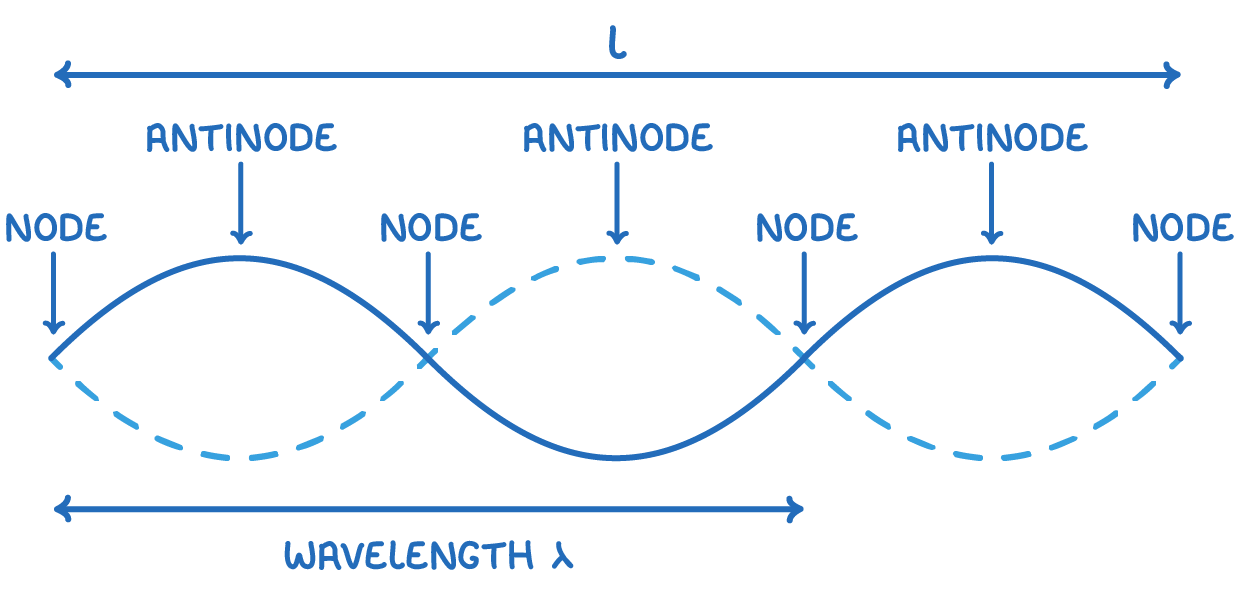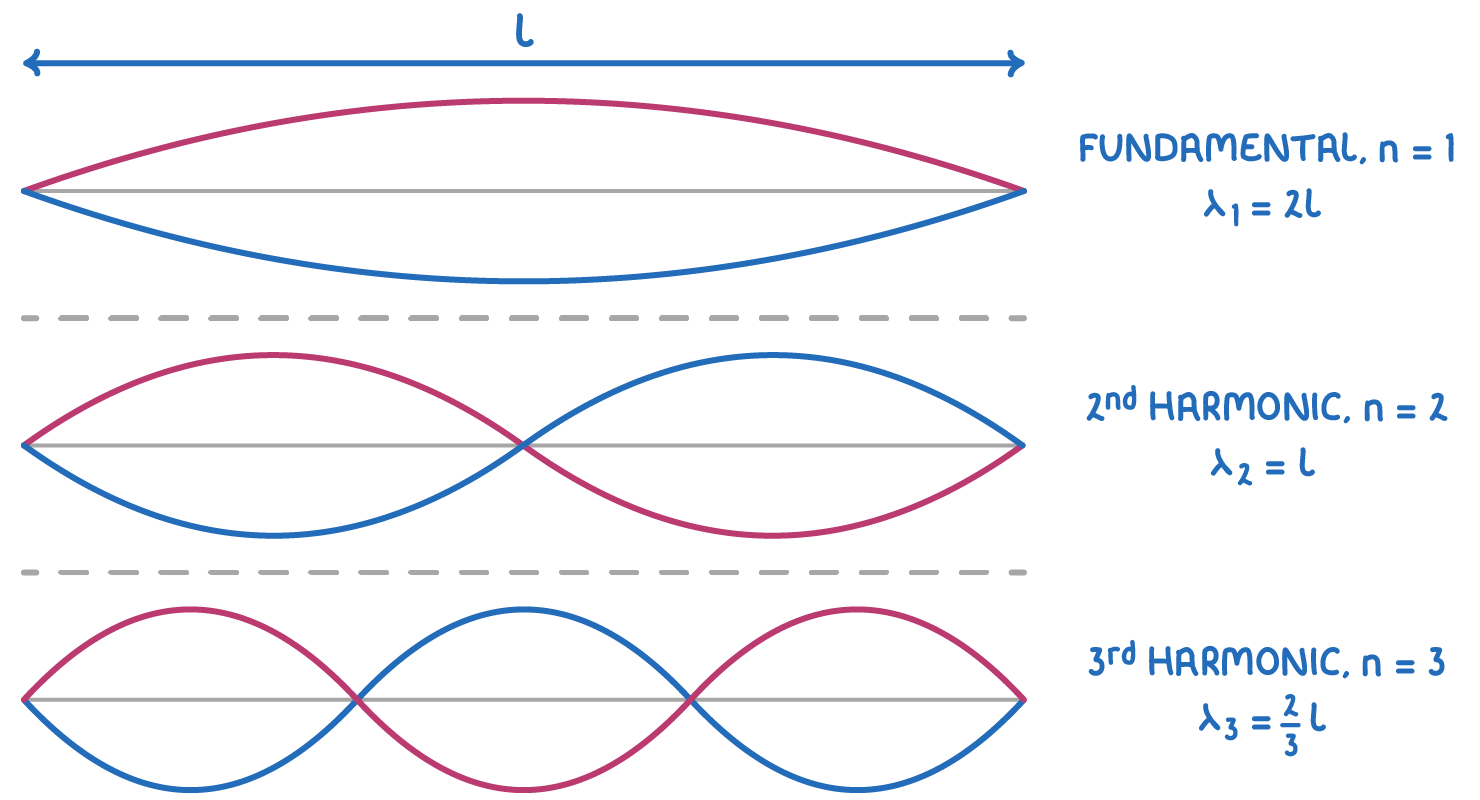Stationary Waves
This lesson covers:
- Formation and characteristics of stationary waves
- Stationary waves in strings and their properties
- The role of stationary waves in musical instruments
- Demonstrating stationary waves with microwaves
- Calculating the speed of sound using stationary waves
What are stationary waves?

Stationary waves, or standing waves, appear motionless and are formed through the principle of superposition.
A stationary wave is formed by the superposition of two waves with the same wavelength, moving in opposite directions.
Their superposition results in points of constructive and destructive interference.
- Nodes - Points of destructive interference where the two waves cancel each other out, resulting in no movement or zero amplitude.
- Antinodes - Points of constructive interference where the waves reinforce each other, creating points of maximum movement or amplitude.
Unlike progressive waves, stationary waves don’t transfer energy; the energy vibrates within the medium, oscillating between the wave's boundaries.
Stationary waves in vibrating strings

The lowest possible observable standing wave is known s the fundamental mode or first harmonic.
For the first harmonic on a string, an antinode forms at the centre of the sting with a node at each end. The length of string is equal to 21λ .